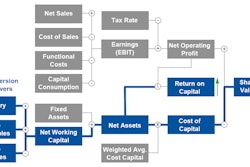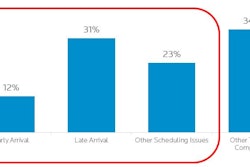
No matter where they fall on the business-to-business/business-to-consumer (B2B/B2C) spectrum, businesses today increasingly operate in a digital-first world. That means almost every customer now is a digital customer. This development is not at all limited to how consumer brands and retailers interact with customers via e-commerce and omni-channel platforms, social media and mobile offers. It’s already affecting business suppliers, many of which traditionally lag behind their consumer-facing counterparts when it comes to technology adoption and e-commerce.
B2B has good reason to play aggressive catch-up: A 2014 Acquity Group survey of procurement officers in the U.S. found that 68 percent of B2B buyers purchase goods online, up from 57 percent in 2013. More than half of procurement leaders, however, bypass suppliers' websites in favor of purchasing from indirect sources, including third-party domains like Amazon Supply.
B2B suppliers and distributors hoping to reclaim and expand their share of this online procurement spend need to think bigger than superficial website design upgrades. To meet and surpass customers' changing preferences, these organizations have to promote digital transformation at their very foundation: their supply chains.
Depending on the maturity of the organization and its supply chain, there are a variety of strategies B2B companies can pursue to elevate their digital presence. Thinking in terms of a traditional customer lifecycle—from conversion and service delivery to repeat purchase—there are three core areas for B2B suppliers to focus on.
1. Enable Faster, More Accurate Product Research
Acquity Group's procurement study found that, as of 2014, 94 percent of B2B buyers conduct some level of online research before purchasing a product—but only 37 percent of those who consult suppliers' websites find them helpful.
As more buyers opt for self-service purchasing models (without engaging sales reps), they expect to find rich product details needed to make their purchasing decision on a supplier’s website (whether sourced at the manufacturer or curated by the distributor). These details include sourcing histories, manufacturer data sheets, warranties and any special promotions. Business buyers also look for an accurate representation of product availability and pricing, and don’t simply want to know if a product is in stock or out of stock, but rather, when exactly they can get it and how they may expedite delivery if needed (also see below).
A strong web presence also considers the diverse ways customers navigate a site; a robust search function, filters and menu options increase a site's user utility. In this instance, imagine availability and custom pricing actually rendered in search results, not simply at checkout.
Ideally, B2B organizations should invest in information technology (IT) infrastructure to a degree that allows the marketing organization to tailor their website experiences based on each unique customer or even anonymous visitor. With the right content management system, integrated analytics and recommendation engines, marketing and merchandising teams can develop more responsive content and update information more frequently to keep visitors engaged.
2. Provide Transparent Delivery and Fulfillment Progress
Offering a website experience that compels visitors to buy is only one step in digitally transforming the B2B supply chain. The B2B fulfillment process—historically considered an impersonal, rote function—is also ripe for change. Exposing this key supply chain link to buyers helps B2B organizations foster those valuable intangible metrics: customer confidence, trust and brand loyalty.
A pretty website doesn't count for much if B2B suppliers can't communicate to customers where their purchases are, how they're being processed or when they are delivered. Many consumer brands are mastering this form of shipment transparency. For years now, a major automotive company was offering customers the opportunity to be notified about the status of factory-ordered cars, from assembly and test drive to port arrival and transport.
Achieving this level of visibility requires that organizations have fluid, integrated IT environments. Outfitting products with hardware-based resources such as global positioning system (GPS) sensors and radio frequency identification (RFID) tags generates timely, accurate data about where an item is in the production or delivery cycle. An emerging B2B practice involves leveraging third-party logistics tracking, and making it available either through links or a seamlessly integrated web experience. Manufacturing, inventory and logistics teams need software that captures these inputs and pushes real-time updates across departments—and then to customers.
3. Create Digitally Connected Products
Since before the dawn of e-commerce, B2B suppliers—particularly manufacturers—were fighting the good fight to become more than a faceless seller for customers. Recent advancements in connected technologies and the industrial Internet of Things, as well as product development, are paving the way for organizations to advance to becoming a relevant business partner.
Digitally connected products fuse stronger bonds between supplier and buyer. An industrial lighting manufacturer, for instance, may equip its bulbs with digital sensors that notify both the user and supplier when the bulbs hit the last 20 percent of their lifespan. One small sensor saves the customer from a last-minute scramble and most likely secures a repeat purchase.
Creating a portfolio of connected products future-proofs customer loyalty, building an ecosystem in which suppliers and their customers constantly communicate. This, in turn, gives suppliers deeper actionable insight into their clients' needs and trouble spots—information that fuels customer loyalty in the long term.
B2B industries are not immune to shifts in consumer buying behaviors. Nor can they continue to watch from the sidelines as B2C brands embrace digital innovation. Procurement officers and purchasing managers are consumers, too. Why shouldn't they—and they do—expect the same efficiency, transparency and convenience from B2B suppliers that they receive from other online vendors?
Rather than leave the legwork to third-party resellers or other channels, B2B organizations should devote time and effort to charting their own digital futures, and analyzing and meeting their digital customers’ expectations and needs. Those that commit to operational improvement are most likely to yield the sales and profit to show for it.
Bob Barr is the senior vice president of the Acquity Group, part of Accenture Interactive.
















